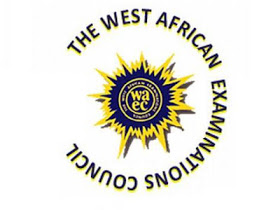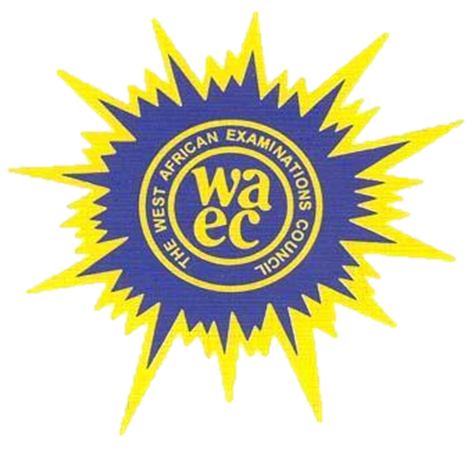WAEC 2021 Financial Accounting Obj And Essay Answer – Aug/Sept Expo
WELCOME TO AYOSTUFFS BEST EXAM EVER
==================================
KEEP REFRESH THIS PAGE IN EVERY 5MIN
==================================
ACCOUNTING OBJ:
1-10: CDCABACACC
11-20: ABACBADDCB
21-30: CBCABDACBD
31-40: BABAACCDAC
41-50: DCDCCCBBDA
===============================
Obj:
Loading
===============================
Theory:
(3ai)
Entrance Fees or Admission Fees is the amount that a person pays at the time of becoming a member of a Not-for-Profit Organization. It is a revenue receipt. Therefore, we account it as an income and credit it to Income and Expenditure Account.
(3aii)
A subscription is a signed agreement between a supplier and customer that the customer will receive and provide payment for regular products or services, usually for a one-year period.
(3b)
(Pick Any five)
(i) No Opening Balance:- Opening balance is not require to prepare income and expenditure account.
(ii) Accrual Basis:- Income and expenditure account is maintained on accrual basis.
(iii) Based On Receipt And Payment Account:- Income and expenditure account is prepared on the basis of receipt and payment account at the end of the accounting year.
(iv) Non-cash Items:- This account records non-cash items also
(v) Debit And Credit Rule:- Expenses and losses are debited and incomes are credited as it is a nominal account.
(vi) No Capital Transactions:- Only revenue items are included in income and expenditure account. So, capital items are excluded while preparing this account.
(vii) Only Current Year's Transactions:- Income and expenditure account includes only current periods transactions.
===============================
(4a)
Bank reconciliation statement: This is a summary of banking and business activity that reconciles an entity's bank account with its financial records. In other words the statement outlines the deposits, withdrawals, and other activities affecting a bank account for a specific period.
(4bi)
Bank charges: These are charges that covers all fees made by a bank to their customers. In common parlance, the term often relates to charges in respect of personal current accounts or checking account.
(4bii)
Standing order: This is an instruction a bank account holder gives to their bank to pay a set amount at regular intervals to another's account. The instruction is sometimes known as a banker's order.
(4biii)
Credit transfer: This means a payment transaction by which a credit institution transfers funds to a payee's account on the basis of a payer's order, and the payer and the payee can be the same person.
(4biv)
Dishonoured cheques: These are cheques that a bank on which is drawn declines to pay. There are a number of reasons why a bank would refuse to honour a cheque, with non-sufficient funds being the most common one, indicating that there are insufficient cleared funds in the account on which the cheque was drawn.
(4bv)
unpresented cheque simply means that a cheque has been written and accounted for, but it has not yet been paid out by the bank from which the money is being drawn. Unpresented cheques are also referred to as outstanding cheques because the funds in question are, as the name suggests, outstanding.
(4bvi)
Uncredited cheques: These represent money that is available to the company but has not yet been recognised by the bank. This comes in the form of cheques paid in by customers and clients.
===============================
(1a) Accounting concepts are a set of general conventions that can be used as guidelines when dealing with accounting situations.
(1b)
(i) Business Entity: The business entity concept states that the transactions associated with a business must be separately recorded from those of its owners or other businesses.
(ii) Accrual: The accrual principle is an accounting concept that requires transactions to be recorded in the time period in which they occur, regardless of when the actual cash flows for the transaction are received.
(iii) Going concern: is an accounting term for a company that is financially stable enough to meet its obligations and continue its business for the foreseeable future.
(iv) Consistency: The concept of consistency means that accounting methods once adopted must be applied consistently in future
(v) Periodicity: The periodicity concept is a period during which business enterprises are required to prepare financial statement at specified intervals.
(vi) Historical cost: A historical cost is a measure of value used in accounting in which the value of an asset on the balance sheet is recorded at its original cost when acquired by the company.
===============================
(2a) An imprest system of petty cash means that the general ledger account Petty Cash will remain dormant at a constant amount. If the amount of petty cash is ₦10,000, then the Petty Cash account will always report a debit balance of ₦10,000. This ₦10,000 is the imprest balance.
As long as ₦10,000 is adequate for the organization's small disbursements, then the general ledger account Petty Cash will never be debited or credited again.
When the currency and coins on hand gets low, the petty cash custodian will request a check to replenish the coins and currency that were disbursed. Since the requested check is drawn on the organization's checking account, the Cash account will be credited. The debits will go to the expense accounts indicated by the petty cash receipts, such as postage expense, supplies expense. In other words, the general ledger account Petty Cash is not involved in the replenishment. The petty cash custodian will cash the check and add the amount to the other cash.
(2b)
(I)Outdated System: Petty cash book is a largely outdated and inefficient system, and it does not fulfil the needs and expectations of the company’s current requirements.
(II) Inconvenient for Larger Expenses: it causes huge inconvenience for larger expenses. The system is highly compatible and convenient for smaller expenses while opposite for larger expenses.
(III) Overspending: Not setting the expenditure limits for every nominal transaction can even put an organization at the risk of facing overspending on purchases.
(Choose any two)
(2c)
(I) Petty Cash Vouchers are used to purchase tangible items from local suppliers who will not take a purchase order.
(II) Petty Cash Voucher is used to control the disbursement of cash from the Petty Cash Fund.
(III) it helps to financially control the petty cash accounts in order to make sure that no one can abuse or mismanage the funds in the petty cash fund.
(IV) it provides solid evidence when it comes to the reconciliation of the amount of cash that is left in the petty cash fund.
===============================
(7)
Mark up to margin invoice
(a) 33⅓%
= 100/3 ÷ 100/1
= 100/3 × 1/100
= 100/300
= 1/3 + 1
= 1/4
(b) Good income 24,000
Profit = 1/4 × 24,000 = 6,000
Coat price = 24,000 - 6,000 = 18,000
(c) Goods return 320
Profit = 1/4 × 320 = 80
Cost price = 320 - 80 = 240
(d) Unrealised c/d = 1/4 × 11,520 = 2880
Cost price = 11,520 - 2880 = 8,640
(i)
Goods sent to Branch Account
DR
Goods returned 240
Trading Account 17,760
Total = 18,000
CR
Goods involved 18,000
Total = 18,000
(ii)
Branch stock Account
DR
Goods invoiced 24,000
Branch Advertisement A/c 7,840
Total = 31,840
CR
Sales 20,000
Goods returned 320
Balance c/d 11,520
Total = 31,840
(iii)
Branch Advertisement Account
DR
Goods returned 80
Gross profit 10,880
Total = 13,840
CR
Goods invoiced 6,000
Branch stock (supplies) 7,840
Total = 13,840




Comments
Post a Comment